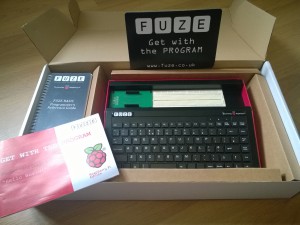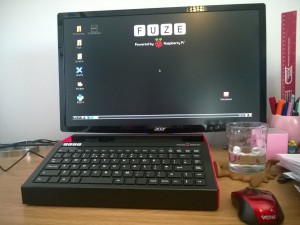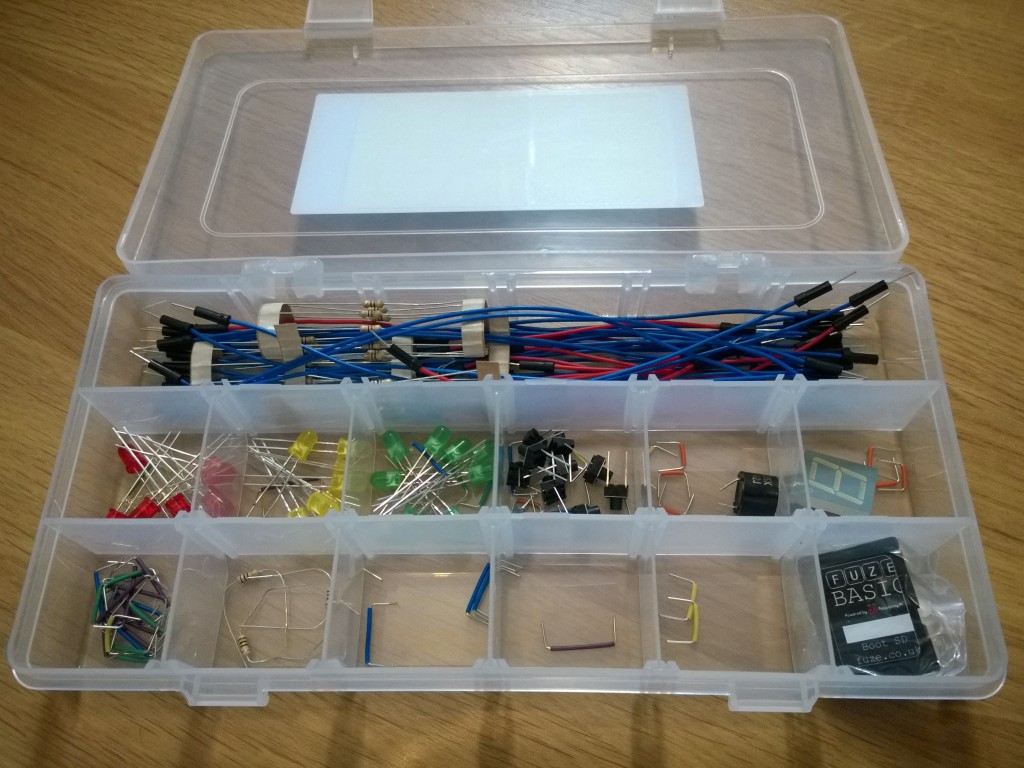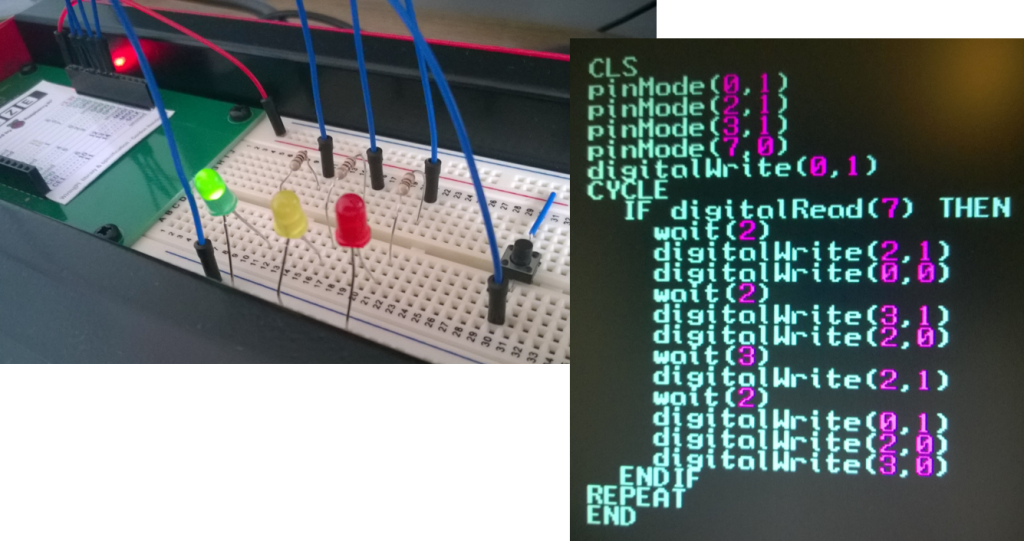I was first introduced to FUZE at BETT earlier this year. Described as a ‘Programmable Computer & Electronics Workstation’, this quality piece of kit can be purchased with or without the Raspberry Pi.  It is clearly a well-made and robust product which will stand up well in most classroom settings. The kit contains everything you need to get started, including a wireless mouse, and the case housing the Pi also doubles up as a sturdy metal keyboard, providing easy access to all of the ports and GPIO pins with a dedicated section at the top giving access to the IO board, seated conveniently next to a solder-less breadboard.
It is clearly a well-made and robust product which will stand up well in most classroom settings. The kit contains everything you need to get started, including a wireless mouse, and the case housing the Pi also doubles up as a sturdy metal keyboard, providing easy access to all of the ports and GPIO pins with a dedicated section at the top giving access to the IO board, seated conveniently next to a solder-less breadboard.
For me the exciting thing about using the Raspberry Pi is being able to combine electronics with programming (otherwise I’m not really doing anything I can’t do on a normal computer) so to have such easy access to the GPIO pins is a real selling point, in my opinion. Also supplied in the box is a handy pin diagram card which sits on the IO board neatly and enables you to identify each of the pins with ease.
Now FUZE haven’t just provided a means to access the GPIO pins, they have also provided a box full of electronics goodies so you can get started straight away. This consists of:
- 40 jumper cables
- 60 small jumper wires
- 30 resistors
- 24 LEDs
- 1 buzzer
- 10 micro switch buttons
- 1 seven segment LED
The SD card supplied features a modified version of BASIC called ‘FUZE BASIC’. There is a nice workbook called a ‘Project Card’ that comes with the kit, although it is much more than a card; this is a simple and easy-to-follow guide that introduces the language and progresses onto loops, variables, user inputs, and selection and offers some fun  challenges at the end to extend ones knowledge. The only drawback I found is that there are parts of the book which don’t necessarily promote good programming practice, such as the naming of variables, suggesting these should begin with capital letters rather than introducing camel casing. It’s not a massive flaw and certainly not one to dwell over when there are so many good points worthy of a mention, the tutorials do encourage the use of indentation when using loops which is good and something my students often don’t do!
challenges at the end to extend ones knowledge. The only drawback I found is that there are parts of the book which don’t necessarily promote good programming practice, such as the naming of variables, suggesting these should begin with capital letters rather than introducing camel casing. It’s not a massive flaw and certainly not one to dwell over when there are so many good points worthy of a mention, the tutorials do encourage the use of indentation when using loops which is good and something my students often don’t do!
With the kit you get the first 3 project card booklets and there are more to download from the FUZE website.
I was particularly keen to start on the electronics so I downloaded Project Card Number 4 to make a flashing lights program! This is a nice little guide, starting from the basics of switching on one LED to multiple LEDs and goes on to introduce FOR loops to set up each one. It ends with challenges like making animated light sequences, although I was keen to experiment with one of the buttons so I made my own challenge of simulating a set of traffic lights at a pedestrian crossing:
I really like the format of the Project Cards, they are simple to follow and I think they will enable students to be independent when using the Pi. I just wish there were more available to fully utilise the physical aspect of the Raspberry Pi as that’s what sets it apart from traditional computers. The fourth project card left me wanting more and as I have experimented in the past with Raspberry Pi electronics I didn’t find it too difficult to figure out how to connect the button into the circuit, luckily in the box there is also a handy reference guide to the FUZE BASIC programming language so I was able to find out how to read inputs from the button too. In the classroom, however, my students would struggle with this so what I would like to see next is a lot more guides and project ideas being produced for using the electronics components provided; I’m sure there are some in the pipeline.
Overall, what can I say about the FUZE workstation? Well, it’s a high-quality product, well made and robust with a huge range of components to get you started. The product is definitely good value for money. I thoroughly enjoyed my experience with using FUZE BASIC programming environment, which brought back fond memories of my old Commodore 64! As for the students . . . well, I’m passing the workstation on to my colleague after half term who runs our computing club, where she will no doubt have great fun unleashing this to her enthusiastic group of girls!
If you’re interested in learning more about the FUZE kit take a look at their website where you can see their full range of products, resources and up-to-date pricing.



Thank you for these resources, they are fab x